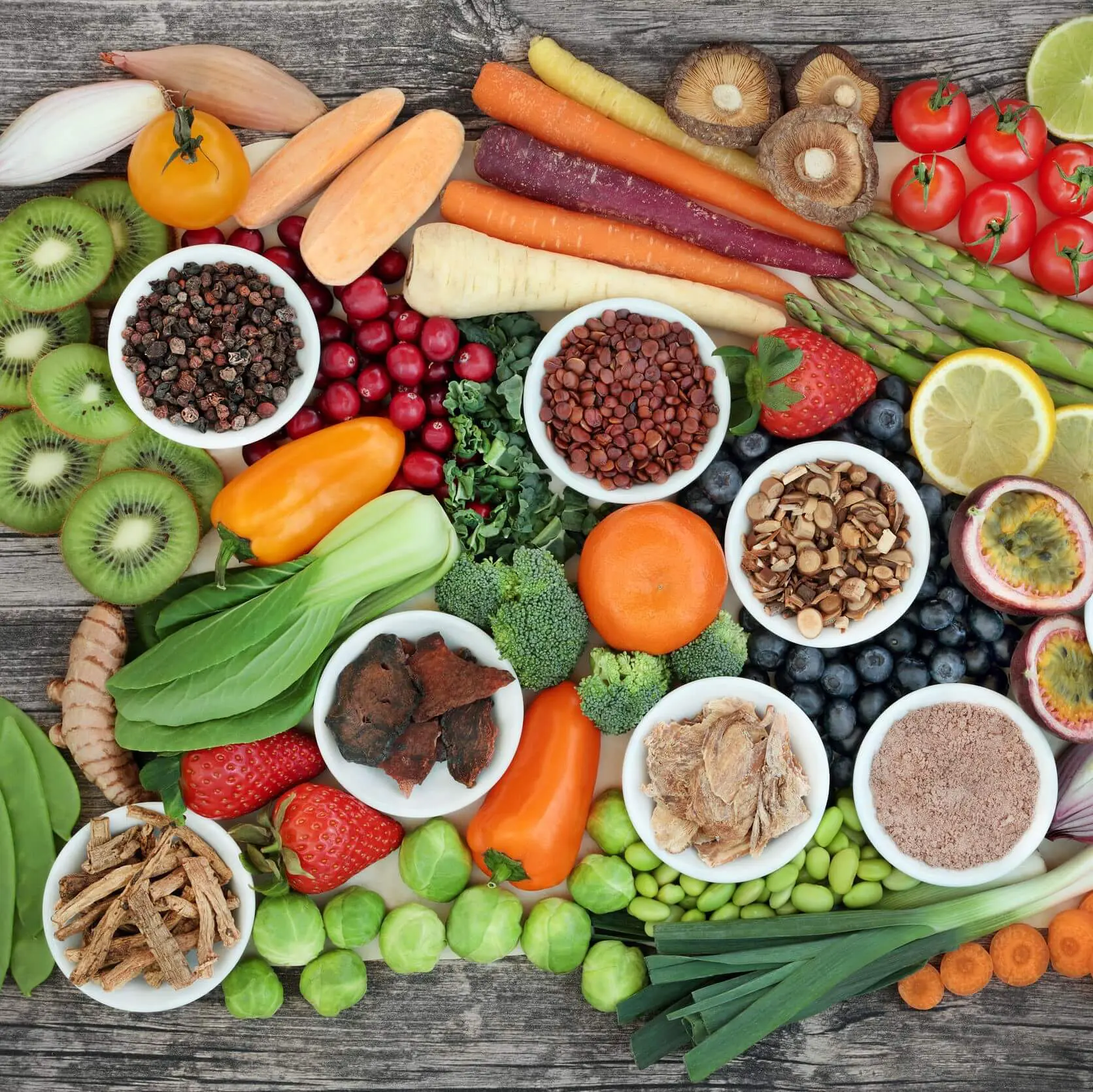
The Diabetes-Cancer Connection: What does it mean?
OK, call me a Pollyanna, but some good can come from realizing the increase in cancer risk linked to type 2 diabetes. By supplying evidence of an important pathway in cancer’s development, we have more clarity on steps that can have double impact, decreasing risk of diabetes and all its complications AND decreasing cancer risk at the same time.
Last week I was fortunate to speak on this topic as part of a webinar for the American Association of Diabetes Educators (AADE). My co-presenter was the distinguished Canadian researcher in this field, Michael Pollak, M.D. Don’t get me wrong – the diabetes-cancer link is worrisome, since the skyrocketing rates of type 2 diabetes in the U.S. suggest that in years to come, rates of diabetes-related cancers could soar as well. Today, though, let’s focus on the silver lining: if we act now to create a few basic changes in lifestyle and eating patterns, we might still turn this Titanic around in time.
The Diabetes-Cancer Link
Numerous studies now make it pretty clear, people with type 2 diabetes are at increased risk of several cancers.
The most dramatic increases in risk seen in people with type 2 diabetes:
- Liver cancer is about two-and-a-half times more common
- Pancreatic cancer is about 73 percent more common
- Endometrial cancer is about 60 to 100 percent more common
In addition:
- Bladder cancer is about 43 percent more common
- Non-Hodgkin lymphoma is about 41 percent more common
- Colorectal cancer is about 29 percent more common
- Breast cancer (especially the postmenopausal type) is about 20 percent more common
The latter two, colorectal and breast cancer, are particularly worrisome since, although the increase in risk is not as great as for some other cancers, because these are among the most common cancers in the U.S., even a modest increase represents many additional cases of cancer.
What’s behind the link?
Extensive research has identified several of the metabolic and hormonal changes that occur as type 2 diabetes develops that may also promote cancer development.
*Insulin Resistance refers to decreased ability of body cells to respond to insulin. When blood sugar rises after we eat, insulin is the hormone that allows sugar from the blood to enter cells where it can be used for fuel. When cells don’t respond to insulin, sugar level in the blood rises, so the body pumps out more and more insulin to handle it.
Insulin is not a carcinogen that creates the DNA damage that starts a cancer cell. However, a high level of insulin promotes growth and reproduction of cells, and may be an important influence promoting the growth of pre-malignant lesions into invasive cancer. Cancer cells seem to be even more responsive to insulin than normal cells.
*Inflammation is highly associated with type 2 diabetes, and as you’ve read in other Smart Bytes™ columns, seems to increase cancer development and progression, too.
So where’s the good news in this?
Cancer is a disease that usually develops over many years, which makes it challenging to conduct studies testing how much our lifestyle choices can actually change cancer risk. As evidence becomes stronger and stronger about the significance of insulin resistance and inflammation to cancer risk, studies from the diabetes field now have added significance.
Large studies of people with early signs of insulin resistance and inflammation have shown that lifestyle changes decrease both insulin resistance and markers of inflammation. For example, in the Diabetes Prevention Program, people targeted a 7% weight loss (14 pounds for someone who weighs 200 pounds) and 150 minutes/week of moderate physical activity. In the early years of the study, people in this program were 58% less likely to develop diabetes than people who just continued their usual lifestyle. Even after 10 years, those in the program were 34% less likely to develop diabetes. That’s impressive, since these were people clearly on the road to develop diabetes, which is a progressive, chronic disease. In addition to the decrease in insulin resistance that causes type 2 diabetes, a marker of inflammation called CRP was reduced in program participants, too.
The Mediterranean eating pattern is also consistently linked to lower levels of inflammation, and in several studies, it decreases insulin resistance and indicators of unhealthy blood sugar levels. This is an eating pattern that features an abundance of delicious vegetables and fruits, limited amounts of meat and a focus on healthy sources of fat (such as olives and olive oil).
Even when these changes come in middle age and beyond by people who have not been eating well or getting recommended amounts of physical activity, blood tests show that metabolic and hormonal changes occur with healthful changes in lifestyle. Of course, we need more research to better understand how this plays out regarding cancer risk.
Lifestyle choices that matter
So among all the large and small changes we see recommended for a healthy lifestyle, which are the ones research most strongly supports for reducing insulin resistance and inflammation?
*Weight loss provides one of the most significant opportunities to make a difference for those who are overweight. Don’t be discouraged if you are far beyond “ideal” weight. Weight loss of 5 to 7 percent has been enough to make a difference. Once you get started on a healthy lifestyle, if you lose additional excess weight, health impact may be even greater. However, better to aim for and achieve a 10 to 15 pound loss and maintain it, than to aim for a weight lower than you can maintain, or to be so overwhelmed at the thought of a huge weight loss goal that you never get started. Choose a target you can realistically reach in six months, and then focus on steps that bring a bit of progress each week to get there.
Look for one or two concentrated sources of calories that have become part of your everyday routine, or consider whether your portions have crept up to excessive size. Either of these spots can be the sources from which you add up a total cut of 500 calories a day from your normal choices. This is enough to get you started on significant weight loss at a reasonable rate.
*Physical activity acts directly and immediately to reduce insulin resistance, as well as acting over time to reduce inflammation and insulin resistance. It’s easy to put off taking a walk when you’re busy, since you know you won’t come home from that walk any thinner than when you left. Remind yourself that the walk you take today is acting today to fight insulin resistance!
Besides the changes in insulin resistance and inflammation, regular physical activity helps support a healthy weight — which we already identified as a major influence to decrease risk of both diabetes and cancer. Regular walks or other physical activity also seem to have healthful impact on levels of estrogen, and could thus provide another way to reduce risk of breast and endometrial cancer.
Since this change in insulin resistance lasts from a day up to three days, create a mantra that reminds you that you just don’t go more than two days without a walk or some form of moderate physical activity.
*Whole grains, vegetables, fruit and dietary fiber are often ignored in the ongoing debates over high-carbohydrate versus low-carbohydrate diets. The missing piece of the puzzle in this discussion is that where the carbohydrate comes from may make a crucial difference. Dietary fiber slows absorption of carbohydrate out of the digestive tract, leading to a slower rise in blood sugar and thus less stimulus to the insulin resistance cycle. In addition, some dietary fiber is fermented by normal gut bacteria to produce short chain fatty acids that have anti-inflammatory effects.
Whole grains supply some of this fiber, of course, but research suggests additional anti-inflammatory benefit, probably from the antioxidant phytochemicals they provide. Whole grains also supply magnesium, which provides further benefit for maintaining proper insulin function.
Include at least one cup of some combination of vegetables and fruits at each meal. Their protective benefits go way beyond weight control .
The trick: don’t simply add these healthful foods to an already full diet. Rather, look for a couple of your refined grain choices to switch to whole grains, aiming for at least three servings daily (preferably more). Decide what foods you might be eating in excess portions, and as you cut back on them, add vegetables or fruit to keep the meal or snack filling.
Why act now
You may be used to hearing of the complications of diabetes, such as kidney failure and blindness, following years of this disease. So what’s the rush? The link between type 2 diabetes and increased risk of cancer is seen in the early years following diagnosis.
If insulin resistance is a key element of the diabetes-cancer link, that means that metabolic conditions are favoring cancer development even in the years before diabetes diagnosis, during what is now called prediabetes or impaired glucose tolerance. In people without diabetes, the insulin resistance of prediabetes has been linked with liver, colorectal, and pancreatic cancer in particular, although much more research is needed to clarify this picture.
Diabetes can bring changes in immune function and organ damage that may also influence its cancer connection. However, with the strength of evidence showing early changes such as inflammation and insulin resistance to be key players, this only adds more reason to find some lifestyle changes on which you can get started today.
Let’s talk: News of this diabetes-cancer link is new to many people, including health professionals and the general public. Please comment below with your thoughts. Share your questions, and I will address them in a future blog post.
Are you a health professional? I’ll be speaking on this subject at several conferences in the months ahead. Of the many important and interesting aspects of this link, what would you most like to hear about? I’d love to have your input!
References:
Giovannucci E, et al. Diabetes and cancer: a consensus report. Diabetes Care. 2010 Jul;33(7):1674-85.
Sun, L and Yu, S. Diabetes Mellitus Is an Independent Risk Factor for Colorectal Cancer. Dig Dis Sci. 2012 Feb 1. [Epub ahead of print]
Diabetes Prevention Program Research Group, K. W.-F. (2009). 10-year follow-up of diabetes incidence and weight loss in the Diabetes Prevention Program Outcomes Study. Lancet. , 374(9702):1677-86.
Learn More:
For health professionals, a peer-reviewed research paper, The Diabetes-Cancer Connection, that I wrote for the American Institute for Cancer Research is available on the Health Professionals and Educators section of the AICR website.
6 Comments
Leave a Comment
Published : March 28, 2012 | Last Updated: October 8, 2014
Tagged: cancer prevention, dietary fiber, healthy diet, healthy eating, inflammation, insulin resistance, physical activity, plant-based diet, prediabetes, reducing cancer risk, type 2 diabetes, weight loss, whole grains
Meet the author/educator
I Take Nutrition Science From Daunting to Doable.™
As a registered dietitian nutritionist, one of the most frequent complaints I hear from people — including health professionals — is that they are overwhelmed by the volume of sometimes-conflicting nutrition information.
I believe that when you turn nutrition from daunting to doable, you can transform people's lives.
Accurately translating nutrition science takes training, time and practice. Dietitians have the essential training and knowledge, but there’s only so much time in a day. I delight in helping them conquer “nutrition overwhelm” so they can feel capable and confident as they help others thrive.
I'm a speaker, writer, and nutrition consultant ... and I welcome you to share or comment on posts as part of this community!





Thanks so much for this info. I teach classes for prevention and survival of Type 2 diabetes so this info is great. Thanks.
Thanks for the positive feedback, Jane. Some people have asked me whether this link to cancer risk is “too overwhelming” for people. But I think that, if presented matter-of-factly and with information about how lifestyle choices have impact on changing risk, it might just provide added motivation to avoid delay in taking at least some steps for healthier choices. Will knowing about this link change anything that your currently doing in your classes? I’d love to hear more about what you do.
I read you AICR paper and this article has practical ideas for the classroom. Thanks
Jane, thanks for this feedback, too. The consensus paper listed in the references of my blog post (and the AICR paper) gives excellent information about the mechanisms and possible medical implications of the diabetes-cancer link. I am hoping the InDepth paper on the AICR site addresses the other side of the coin as far as what we say about diet, activity, and weight management — all very important for people to hear about. Please share the link and spread the word about the InDepth paper. I’d love your feedback about additional areas that you’d like to see addressed in articles and presentations.
Karen,
Thank you for a great article. The numbers are quite compelling in regards to the diabetes-cancer link. Knowing there is something you can do is important and encouraging. I believe you should focus on both aspects as you did in you blog post. Along with the reasons not to delay. The other piece of good news is the message is the same if you have prediabetes lose 5-10% of body weight if overweight and along with physical activity 5 times per week this will reduce your chances of developing type 2 diabetes or delay the progression of diabetes. In addition these same steps may also be helpful for cancer prevention. I think we need to emphasize that the message is strong and consistent for diabetes prevention and/or cancer prevention and/or heart disease. I think this is good news!
Thanks for taking the time to join the conversation, Mary Lynn. Although the diabetes-cancer link means the impact of not making healthy lifestyle choices could be really bad, I am hopeful that as you say — a strong consistent message that the same healthy choices can have multiple benefits — will be a positive for people. Do you see yourself addressing the link outright with patients, or simply keeping a bottom line message that works for diabetes & cancer prevention without explicitly saying so? I’d love to hear how you and others will put our growing understanding of this to work!